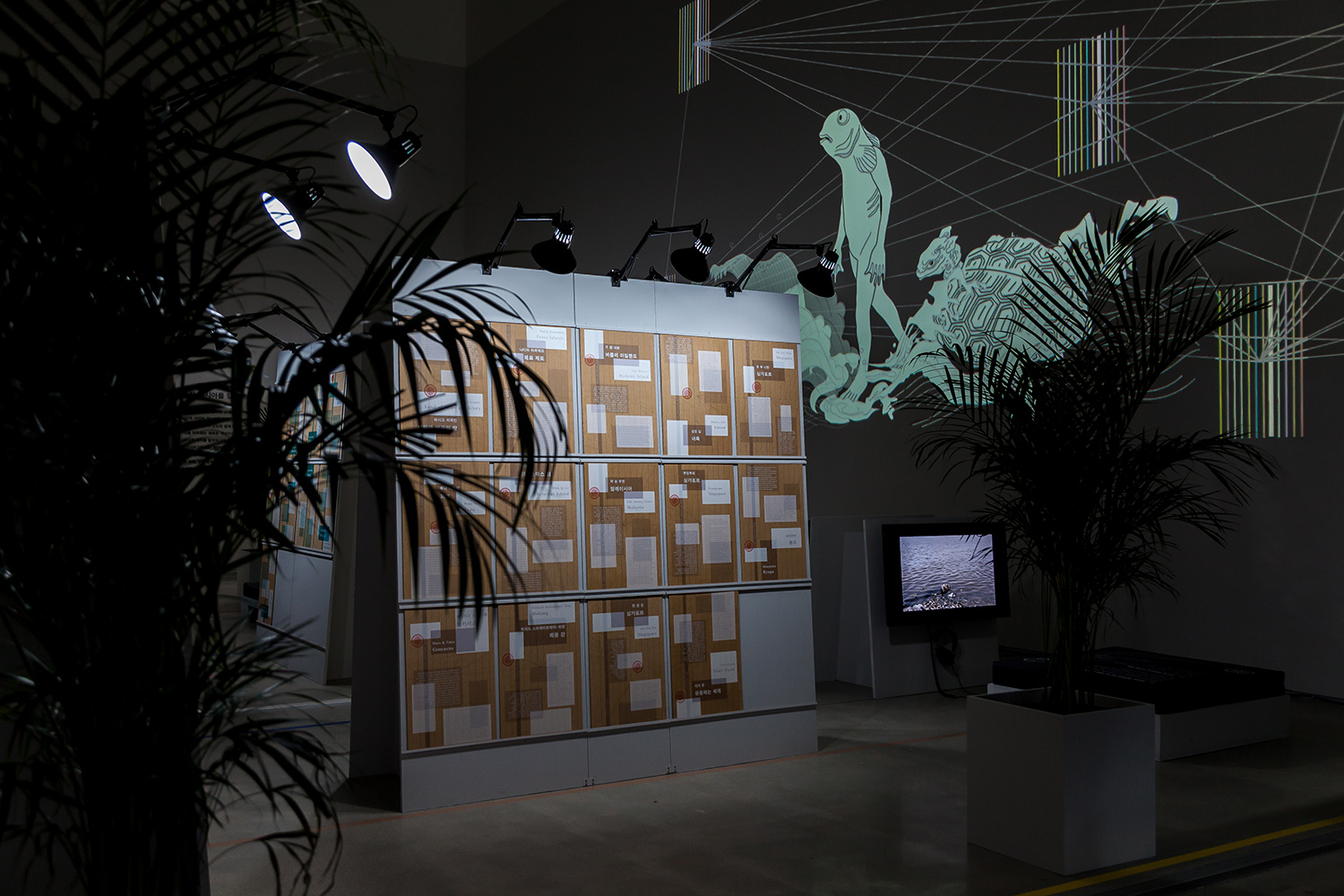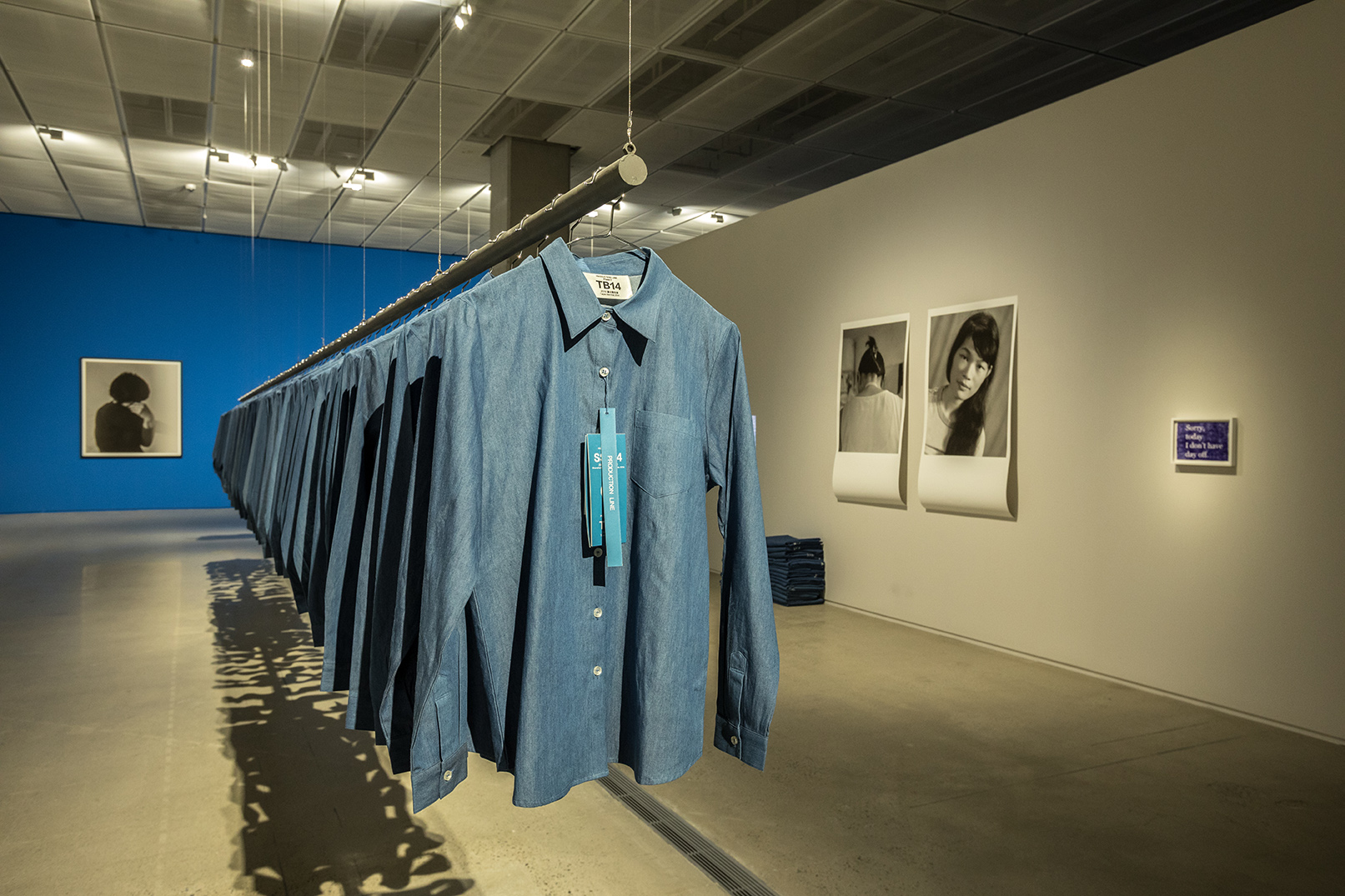Shows
“How Little You Know About Me”


The first installment of the Asia Project exhibition series, “How Little You Know About Me,” at Seoul’s National Museum of Modern and Contemporary Art (MMCA), called on 15 international artists to reimagine the concept of Asia. Spanning a range of mediums, including installation, video and photography, the exhibition presented multiple perspectives on the historical, political and cultural specificities within the region, from works focused on personal stories to those referencing broader socioeconomic developments.

In the MMCA basement, Towards a Possible Asia (2018) by Hong Kong-based artist and architect collective MAP Office was a room-sized installation comprising a four-channel video and various books, printouts of artists’ profiles, and samples of traditional textiles from the region, mounted on the walls in neat grids or arranged on surrounding tables and shelves. An animated world map projected on one wall provided English-language descriptions of various international artists’ practices, along with illustrations of hybrid creatures moving back and forth across the map. A total of 70 artists were profiled in this installation, which reconsiders territories not as mere sections on a map but as living places defined by people and their creative output.

A number of artists looked to the past in order to examine the historical aspects that have shaped their territories. In Taiwanese artist Po-Chih Huang’s Production Line (2018)—an iteration of which first debuted at the Taipei Biennale in 2014—a rack of chambray shirts and khaki trousers is installed in the center of the space, while another pile of blue clothing is stacked neatly on the floor. On one wall, two blown-up, vintage, black and white photographs of a woman are bookended by a projection and a framed print of the same image: the words, “Sorry, today I don’t have day off” in a white serif font, against a background of dark blue scribbles. A photograph of a woman with cropped hair doing a shoulder stretch, her face obscured by her arm, is affixed to a perpendicular wall. Excerpts from the artist’s autobiographical book Blue Skin—All About My Mother (2012), which inspired this installation, are printed in Korean and English on the wall, providing an account of his mother’s experiences as a worker in a textiles factory, and the shift of Taipei’s economy from agriculture to industry over the span of five decades, highlighting the individual toil on which broader socioeconomic development depends.

Also centered on history, albeit refracted through the lens of fiction, was Indonesian artist Timoteus Anggawan Kusno’s mixed-media installation, The Death of a Tiger and Other Empty Seats (2018), in which various artifacts and source materials from an imaginary place called Tanah Runcuk near the former Dutch East Indies are presented in glass cases, accompanied by clips from documentary films about the region. This simulated exhibition presented by the fictional Center for Tanah Runcuk Studies (CTRS) served to examine and emphasize the brutality of Indonesia’s post-colonial history.
Other works in the show challenged the notion of fixed ethnic identities, such as Korean artist Yuri An’s three-channel video, Rogue Stars (2018), which documents the lives of the Joseon-jok, ethnic Koreans who emigrated to China from the 19th century and who live in the Yanbian Korean Autonomous Prefecture in Jilin province. The 16-minute film captures the Yanbian landscape and the livelihoods of the Joseon-jok, as well as their accounts of displacement as people who feel neither Korean nor Chinese, questioning whether the idea of a distinct Korean identity based on ethnic homogeneity is valid. Hikaru Fujii’s Playing Japanese (2017) also explores the link between ethnicity and exclusion, with one screen showing Japanese men and women discussing which facial features and body types are truly Japanese, while on other screens, Koreans, Taiwanese and the indigenous peoples from Hokkaido and Okinawa islands speak of the discrimination they face in Japan.
“How Little You Know About Me” presented a variety of perspectives on Asia and its diverse constituent territories. Instead of giving didactic responses on how to define the region, the exhibited works opened up possibilities for conceptualizing ethnic, regional and post-colonial identities.
“How Little You Know About Me” is on view at the National Museum of Modern and Contemporary Art, Seoul, until July 8, 2018.







